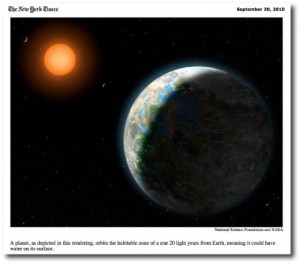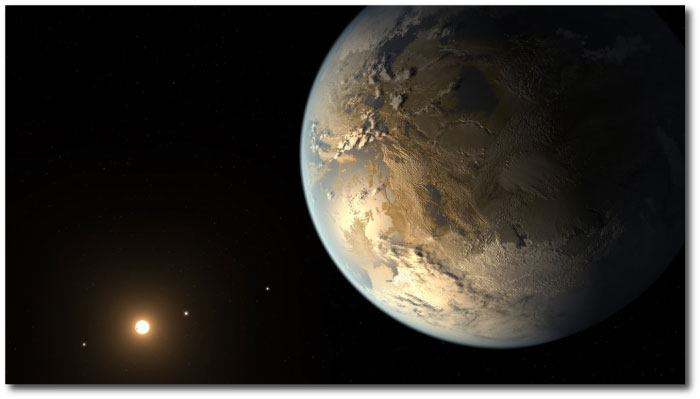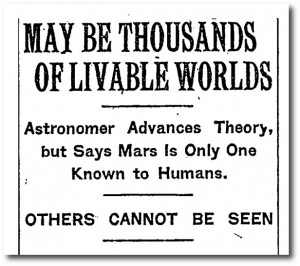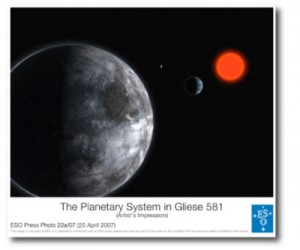Kepler 168f has been the subject of substantial media coverage over the past week. This newly confirmed planet orbits a red dwarf with roughly half the mass and radius of the Sun, receives about 27% of the insolation that the Earth receives, and, assuming that it has a terrestrial density, is about 40 to 50% more massive than Earth. On the oklo.org exoplanet valuation scale, designed in 2009 to make objective comparisons between potentially habitable planets, Kepler 186f would buy a round-trip ticket to Newark, clocking in at a respectable $655.
The accompanying image of this planet, however, is absolutely stunning. I stared at it for a long time, tracing the outlines of the oceans and the continents, surface detail vivid in the mind’s eye. Yes, ice sheets hold the northern regions of Kepler 186f in an iron, frigid grip, but in the sunny equatorial archipelago, concerns of global warming are far away. Waves lap halcyon shores drenched in light like liquid gold.
It’s interesting to look at the New York Times articles on habitable planets that have been published over the past century.
The first mentions are generally associated with reports of stern public talks given by prominent astronomers. For example, this news item, from 1931, is full of shaky typography and unfounded speculations, but it has no illustrations, and is clear up front, furthermore, that pictures are not available.
The first actual habitable exoplanet discovery reported by the New York Times was Gliese 581c back in ’07. The press release image for this one looks downright amateurish in comparison to Kepler-168. The lighting, the perspective, and the geometry are all woefully off. The star looks like a traffic stoplight, “red to be exact”.
By 2010, front-page-news-making habitable planets still tended to be hand-drawn, but they were beginning to show a few signs of life:

A big step forward came in 2011, with this lil’ “Goldilocks” (feat. HD 85512b):
I think this was the first NYT-published image of a newly discovered habitable planet that could be misconstrued as a photograph by a reasonable person who did not read the fine print, or who perhaps did not even notice the fine print on the tiny screen of a mobile device on the bus to work.





So what do you think of the press-released habitable candidates so far? From what I can see, there’s a mixture of planets that are comparable to Venus in insolation, planets that have radii that suggest that they are mini-Neptunes, planets that turned out not to exist, at least one case where it wasn’t entirely clear which of the two stars in the binary the planet transited (but they drew a nice habitable zone diagram anyway), and this latest one which just about looks like a reasonable bet.
I’m not sure what dropped the valuation of Kepler 168f so far, but there was a term in your formula I was uncertain of – how is (Tyr – now) meant to be calculated?
Pingback: Two Takes on Habitability
This is interesting. Are the pictures a problem? Does anyone know how many people assume they’re real? And could we quantify how good they are at representing what we actually know about these planets?
@W. Dow Rieder
Possibly for getting less then a third of the energy (from it primary) than Mars at present gets?